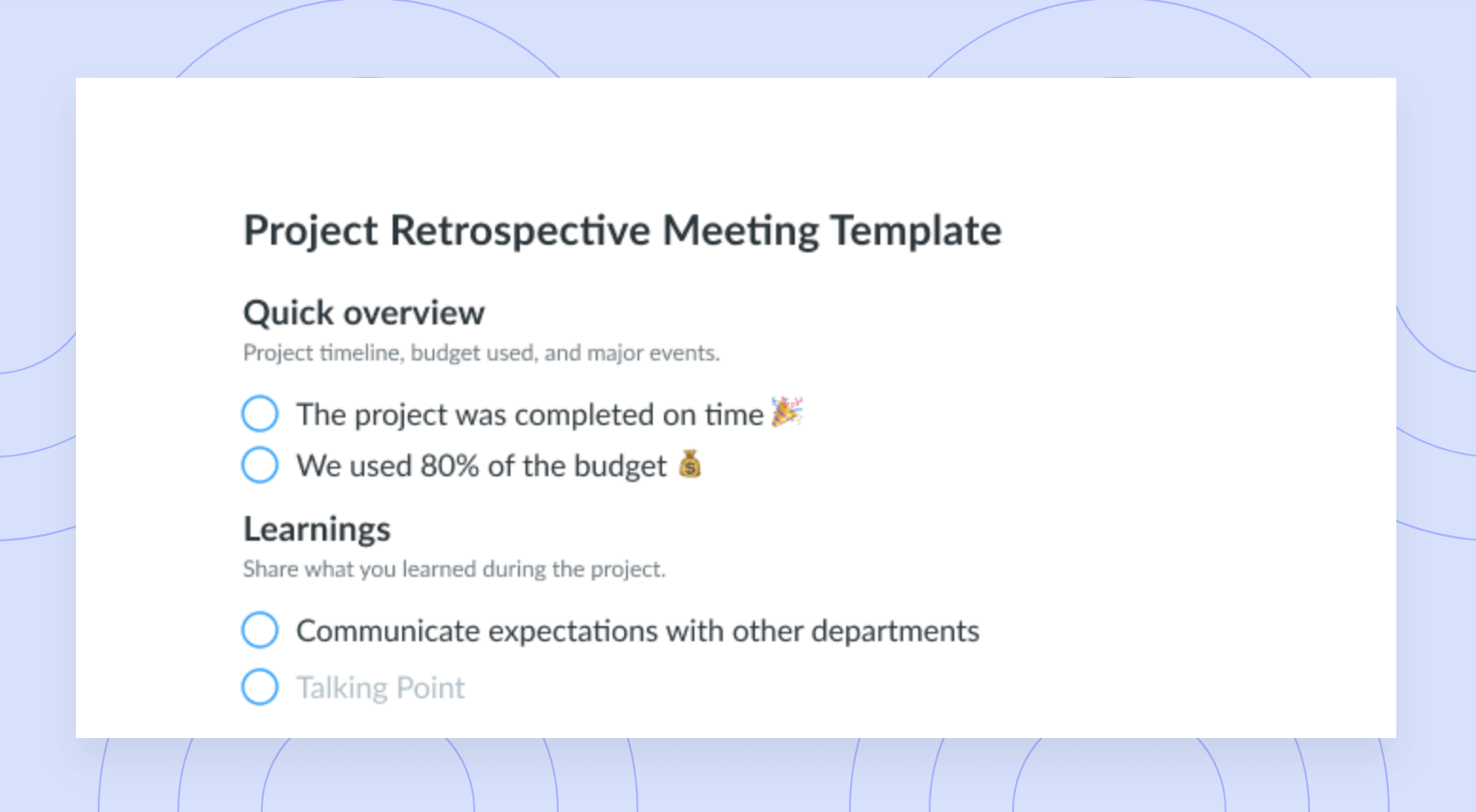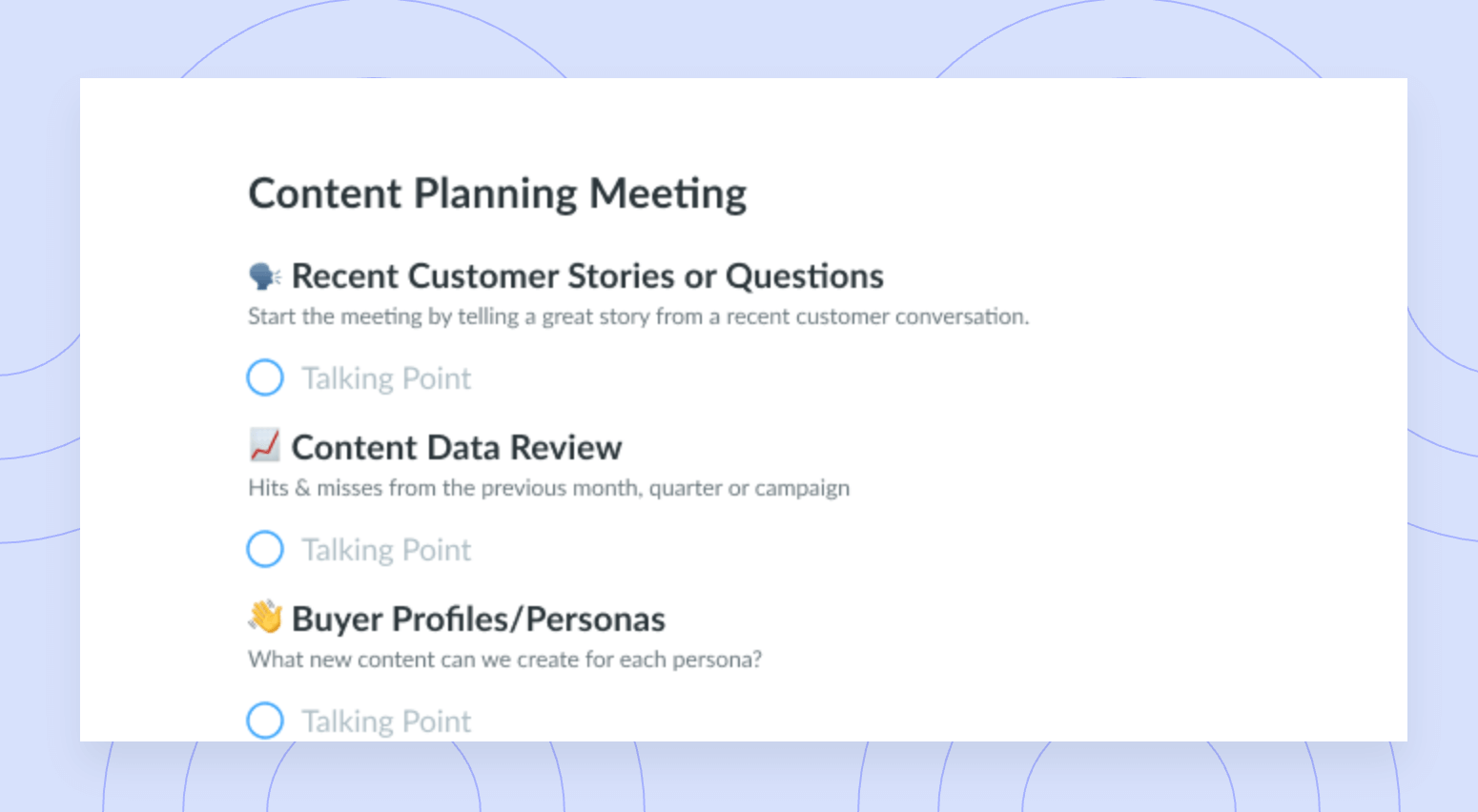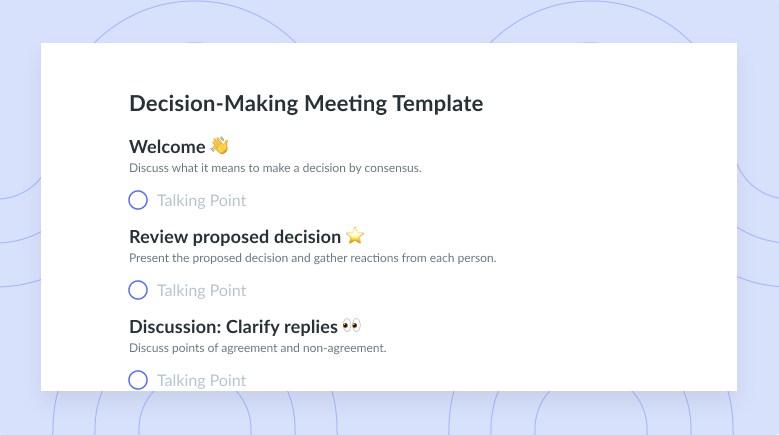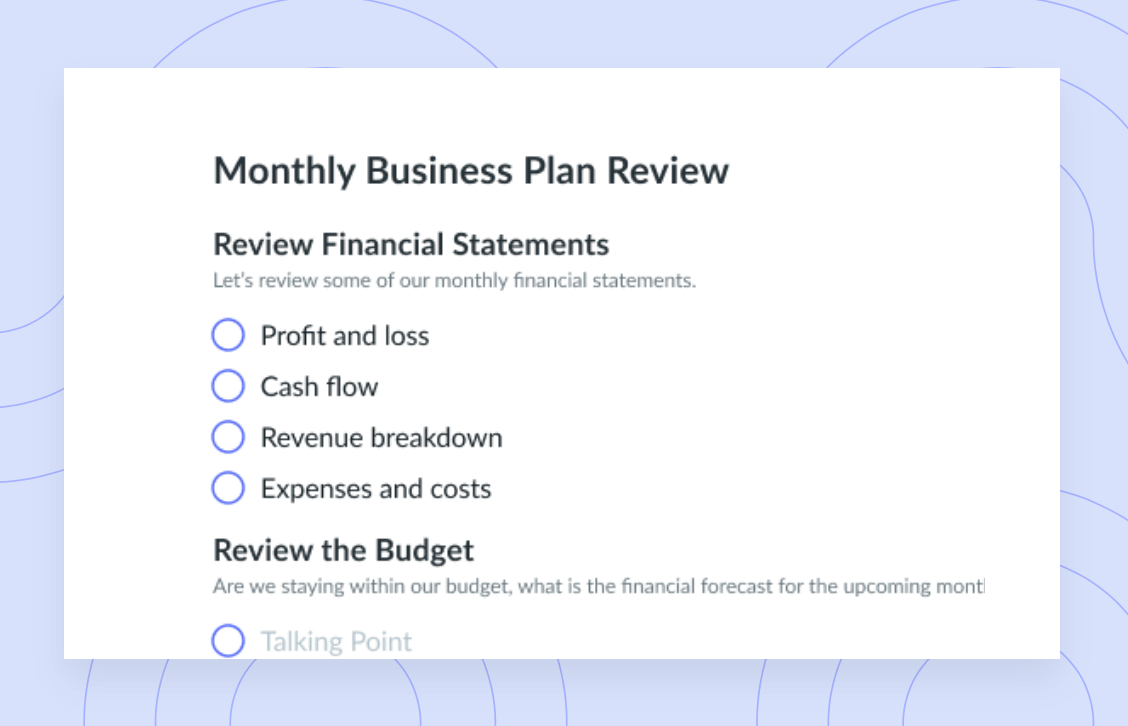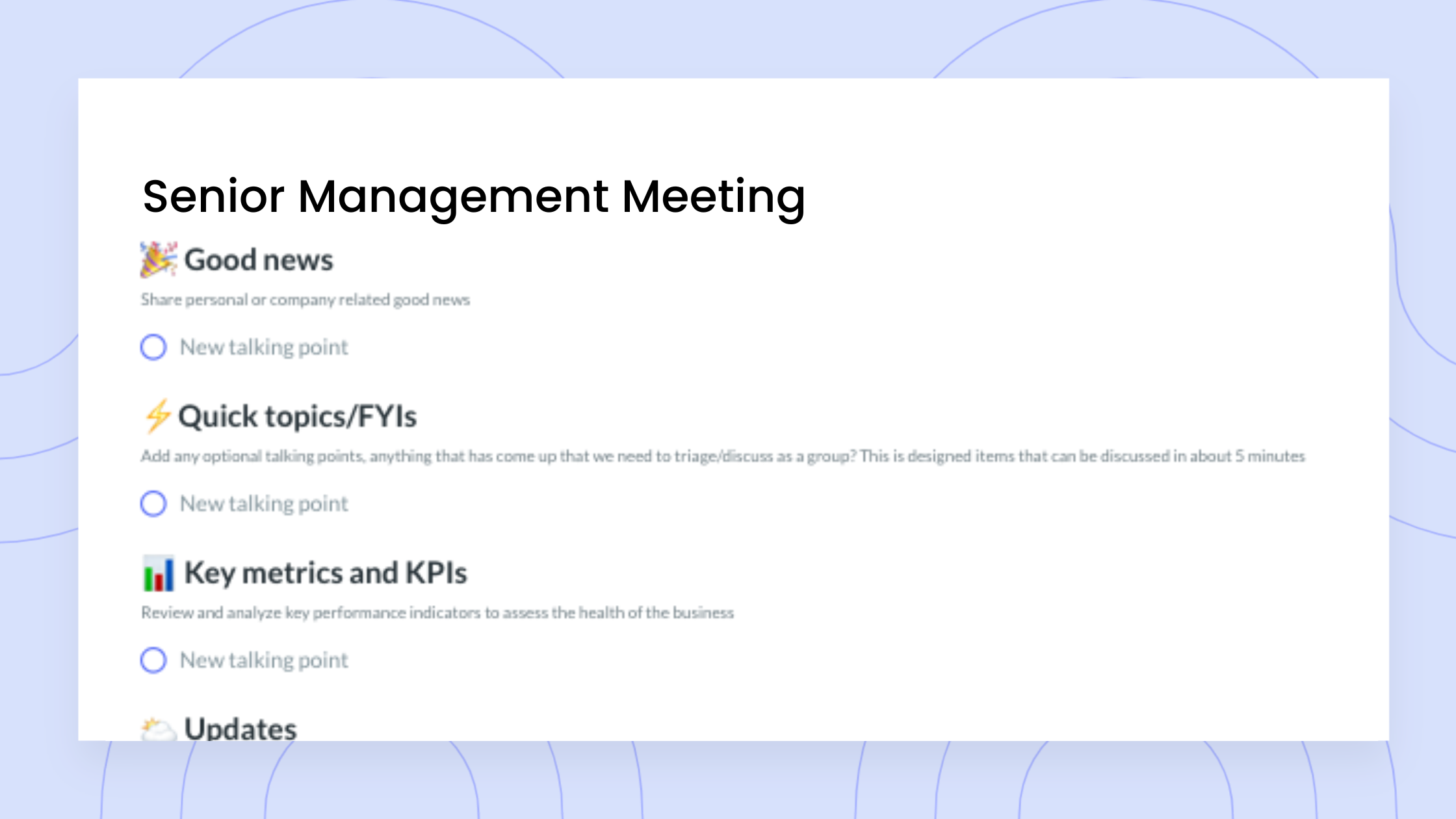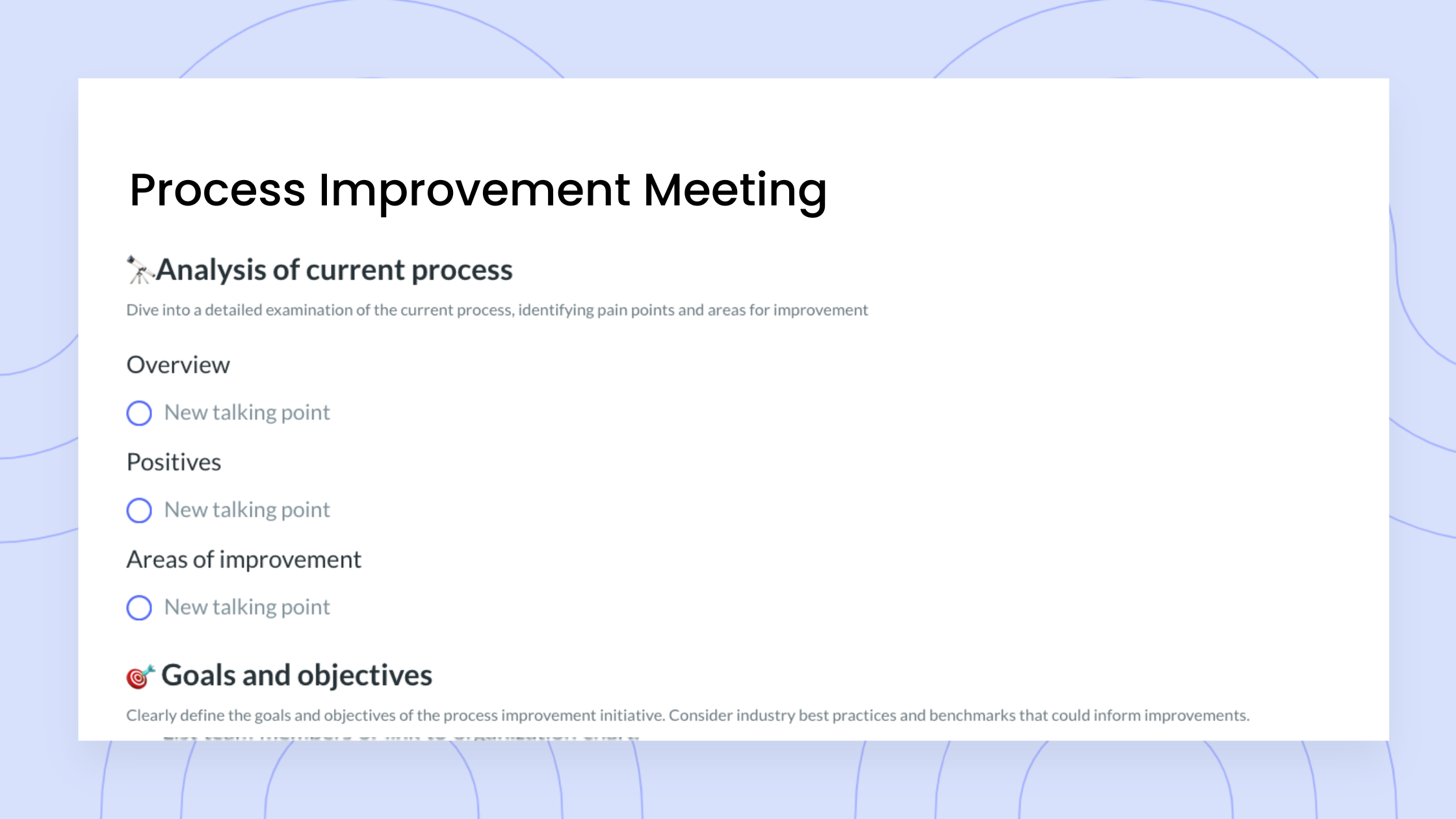Comprehensive Guide to Adaptive Project Management
Use adaptive project management to improve your decision making and adjust to changing environments with ease.
History tells us that the most successful leaders can embrace change and successfully adjust plans no matter the circumstance. Abraham Lincoln famously appointed rivals for his cabinet because he was open to debate and innovation. Martin Luther King Jr. inspired his followers and the world by considering new ways of thinking before anyone else.
Too often, project managers only focus on achieving specific project objectives instead of thinking about how to best adapt to change. What if we told you that being an adaptive project manager could save you time and money, and make you a more effective leader for your team?
Read on to learn about adaptive project management (APM), see how it differs from traditional and predictive project management styles, and explore the six phases of APM.
- What is adaptive project management?
- Why do we need adaptive project management?
- Adaptive vs. traditional project management
- Adaptive vs. predictive project management
- The phases of adaptive project management
- Benefits of adaptive project management
- Three ways to implement adaptive project management
What is adaptive project management?
Adaptive leaders help individuals and teams thrive in the face of challenging situations. In project management, adaptive leadership means being proactive instead of reactive.
Adaptive project management (APM) involves managing the planning and execution of a project while accommodating the unknown. APM methodology asks leaders to anticipate the unexpected by establishing flexible plans that account for fluctuating circumstances. It also helps mitigate risks associated with changes in rapidly changing industries like finance and technology.
Why do we need adaptive project management?
Instead of adapting to change, APM asks that project managers and teams change to be adaptive. APM can add value to a team or company by simplifying complex work processes, decreasing costs, and improving client satisfaction. By encouraging flexibility within each task, the project management process itself becomes more efficient.
The APM framework also encourages project managers to respond to changing market conditions by monitoring market activity and analyzing trends, keeping each project competitive. APM fosters growth within a team, too. The APM framework allows members of a group to learn by doing and adapt as needed.

Managing a team?
Take control of your team meetings by having collaborative meeting notes and encouraging accountability with action items. Try a tool like Fellow!

Adaptive vs. traditional project management
Traditional project management is a linear approach where processes occur in a predictable sequence. Leaders using a traditional project management framework are unlikely to sway from their step-by-step approach to meet their desired results.
The key difference between APM and traditional project management is the timeline. In traditional project management, scheduled completion dates for deliverables can be adjusted as needed. In APM, learning from previous outcomes and decisions takes precedence. If a deadline expires, the APM framework encourages the project leader and relevant stakeholders to put the deliverable aside until the next cycle.
Adaptive vs. predictive project management
Predictive project management is an approach where stakeholders put a detailed project plan into place to reach a larger goal. This type of project management works well when the requirements and scope of work for a project are clear.
The difference between APM and predictive project management is that the APM model focuses on adjusting the project as needed throughout the entire process while predictive management ensures that project goals, steps, and milestones are clear from the beginning. A straightforward predictive project management cycle involves analyzing, designing, building, testing, and delivering a product. APM requires the project manager and their team to complete each of these steps multiple times before settling on a final product.
The phases of adaptive project management
1Project scope
In the first APM phase, the project manager and other involved stakeholders meet to outline their expectations for a project. At this time, the group should reach a consensus on what they want the final project to look like and agree on a set of objectives. Team members can also use this phase to define project requirements and rank them by importance. In phase one, the team also sets guidelines for timelines, cost, and scope. Once this is complete, the group can organize action items and detail deliverables in their project management tool of choice.
Use Fellow to host a successful project kickoff meeting with your team. Build a collaborative meeting agenda using one of our many ready-to-use meeting templates, record meeting notes, assign action items in real-time, and exchange feedback throughout the process.
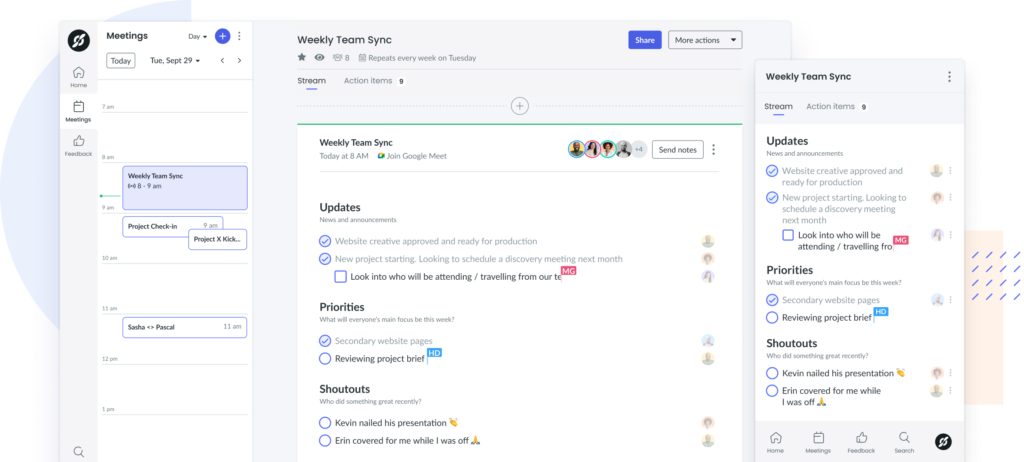
2Cycle plan
In phase two, the group divides the project into smaller cycles. Some project managers call these cycle iterations and define them based on tasks that are grouped. In this phase, the group also develops a plan of action to carry out in subsequent phases. The plan must include timelines for different project components. If the group created a work breakdown structure (WBS) as a basic framework for project steps and tasks in phase one, the group should refer back to it at this time.
3Cycle build
During the third phase, the team carries out the plans outlined in phases one and two. The group then completes tasks, finishes cycles, and makes changes as needed. In APM, the group can adjust plans mid-cycle to ensure a more successful final product. After designing, building, and testing for multiple cycles, stakeholders evaluate whether any changes must be made before moving on to the fourth phase.
Collaborative meeting agendas are just the beginning. With Fellow, your team can track objectives and project progress and adjust your plans on an ongoing basis.
4Client check-in
Once the group is finished with multiple iterations of a project, it’s time for the client to review and determine if the final product meets their expectations. In APM, project elements change throughout the project life cycle, so clients need to have an opportunity to view the product and deliver feedback before the final stage. Once the client delivers their feedback, the project team returns to the project and makes changes. This process repeats until the client is satisfied with the product or the budget has been maxed out.
5Final review
At the final phase of the APM, the project manager and team reflect on the project and make a plan to improve future processes. Some teams may host a post-mortem meeting at this time to identify what went well and what the team should work on more to increase the chances of success for future projects. Take note of any important takeaways that will help you guide future processes.
Benefits of adaptive project management
There are a few key benefits to adapting the APM process. Some of these include:
- Decreased costs: With APM, the goal is to eliminate low-value tasks early, in favor of solutions that will make the final product great. The flexible nature of APM encourages teams to spend on worthwhile methods to meet desired results, rather than following through with costly methods that hinder the process for the sake of following an initial plan.
- Improved client satisfaction: With APM, teams are encouraged to continually implement client feedback at all stages of a project. APM methodology helps teams develop collaborative relationships with clients because both parties are required to communicate their feedback, plans, and expectations regularly for the project to work.
- Saved time: Teams minimize the number of revisions needed when they make changes throughout the project life cycle instead of only at the end. APM methodology has project managers and teams asking, “How can we improve the outcome based on what’s happening now?” and iterating on an ongoing basis.
Three ways to implement adaptive project management
Here are three examples of how you and your team can implement APM methodology into your current projects:
- Conduct a quantitative risk analysis to determine what will happen with a project schedule if things go off track. Use this to set a project schedule that is realistic for your team.
- Create a detailed plan for the next stage of your project that accounts for possible changes. Outline many potential scenarios for each project phase along with possible risks.
- At the beginning of a project, identify multiple project alternatives to your initial plan that the group can look to when they want to make changes.
Parting advice
APM is a project management methodology that managers and teams can use to introduce changes and, ultimately, deliver incredible project results. If you currently use traditional project management, encourage your team to iterate throughout the process instead of sticking to the status quo. This will help team members get used to the less structured APM method and to thinking on their feet!
It’s important to have a tool that will help you respond quickly to project changes. As you start your APM journey, try using Fellow to prioritize tasks, track action items, and manage team deadlines.








![After Action Reviews: 7 Best Practices [+ Free Template]](https://fellow.app/wp-content/uploads/2023/02/After-Action-Reviews.jpg)

